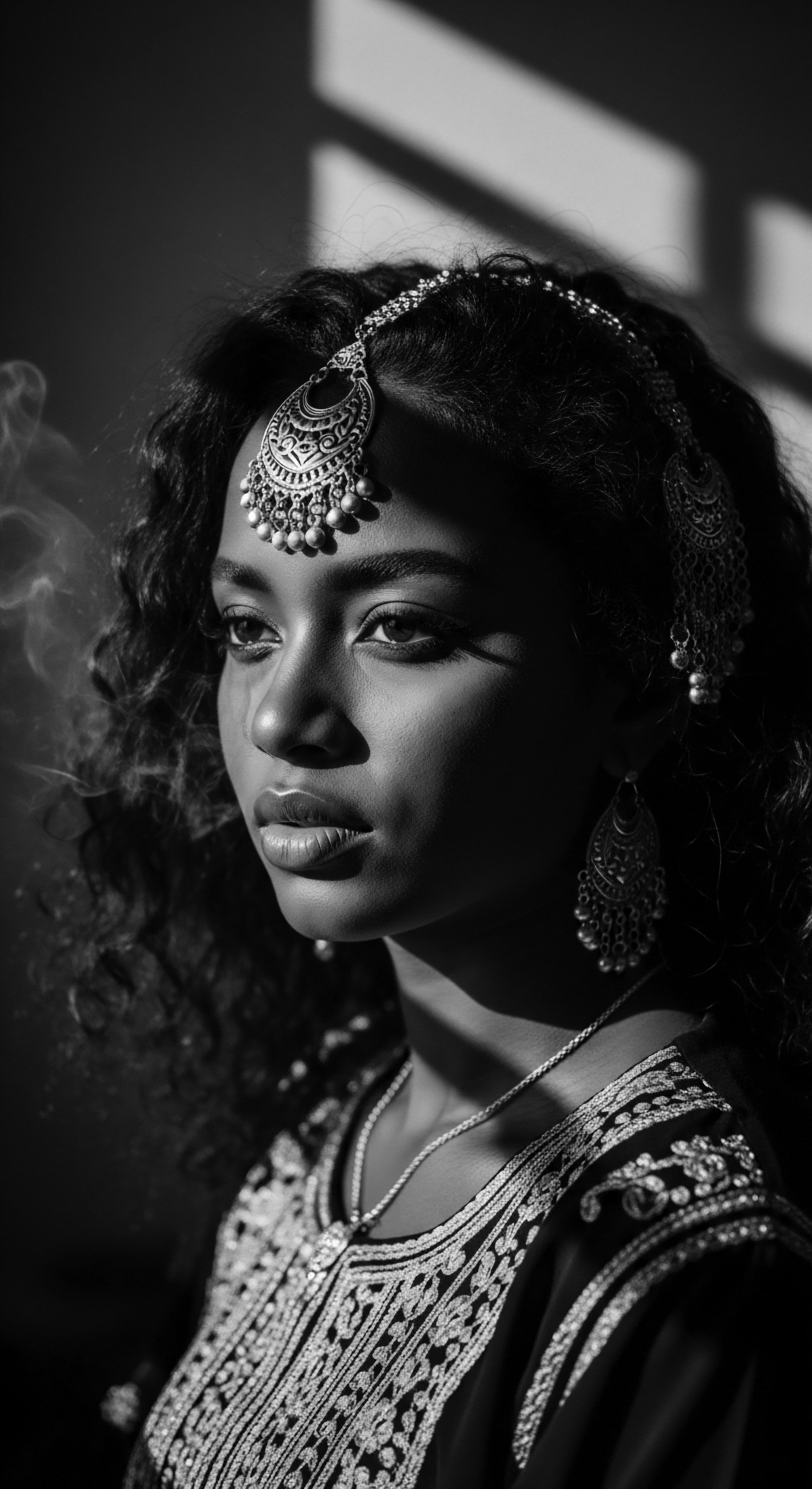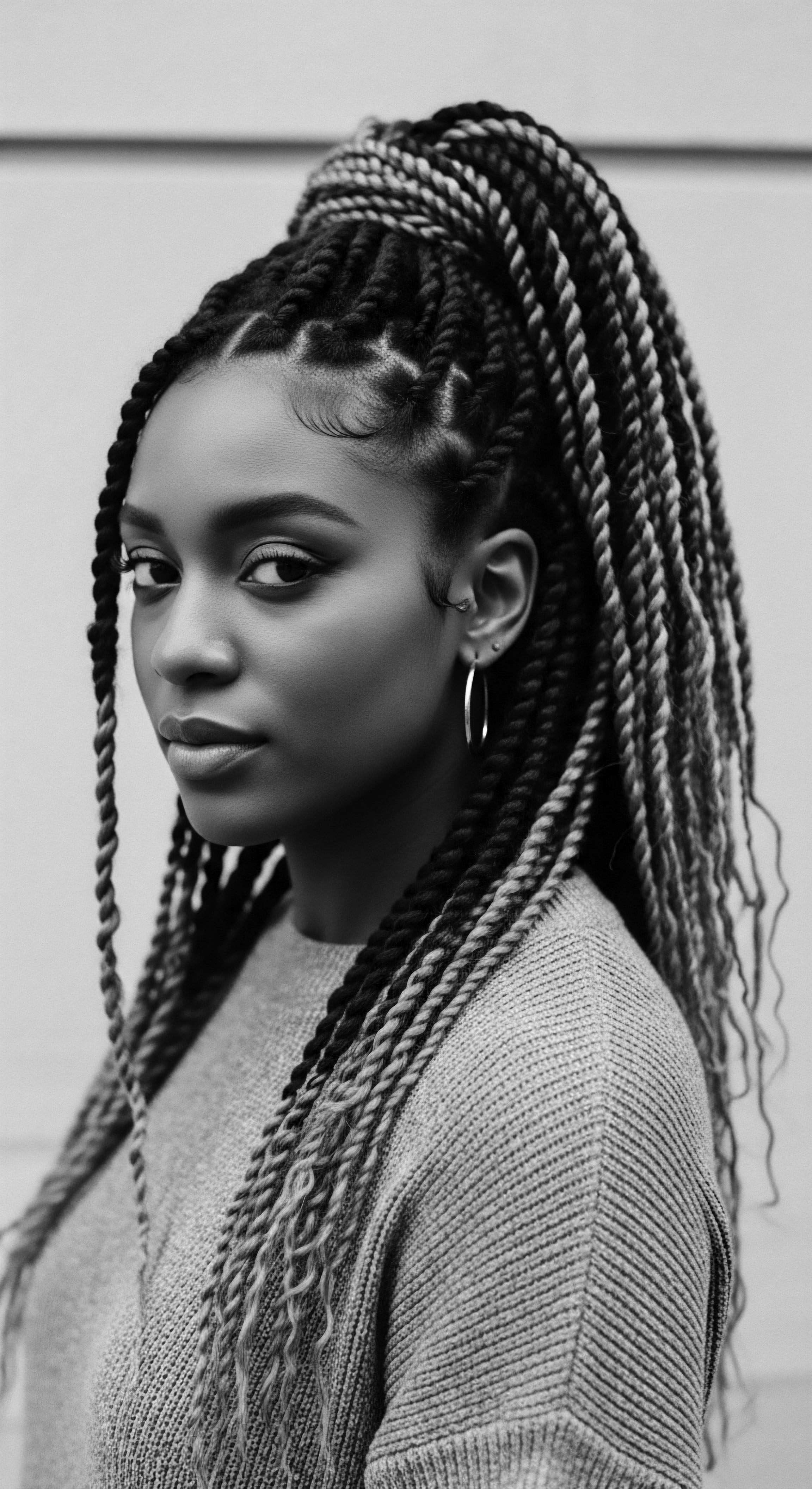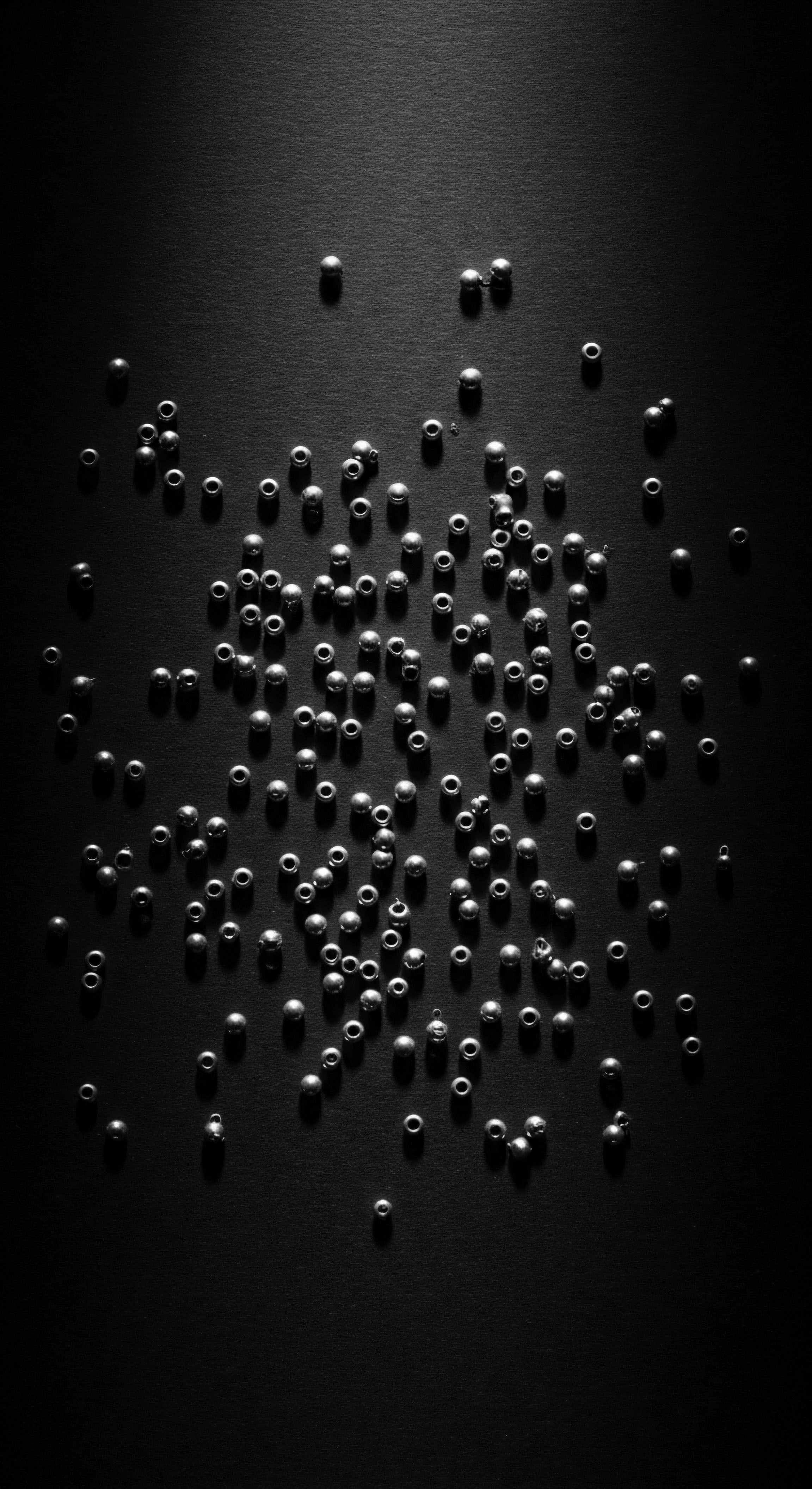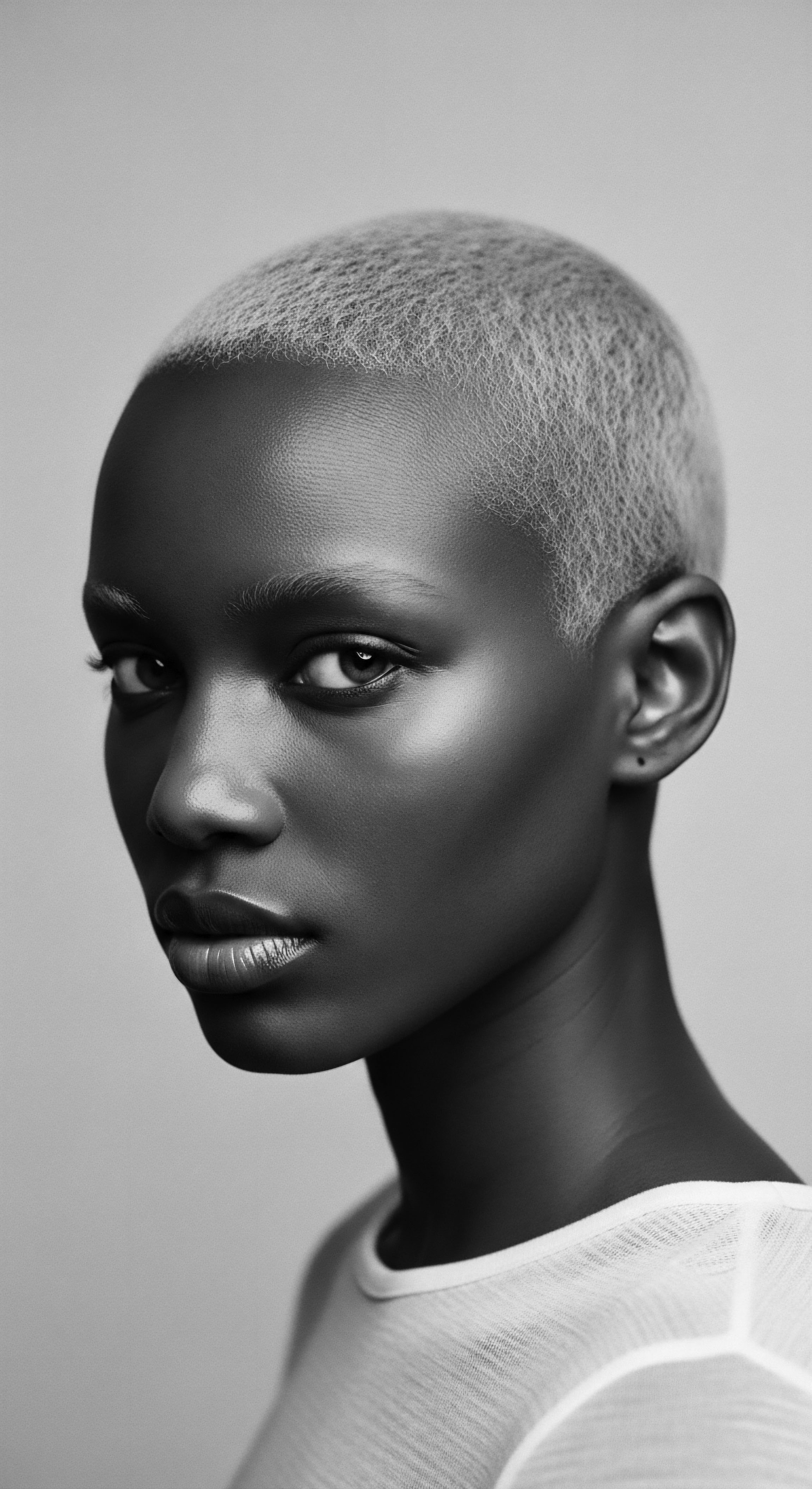
Roots
The very strands of our textured hair, each coil and curl, hold within them a profound ancestral memory, a living archive of identity and belonging. Before the shadows of colonial imposition stretched across the African continent, hair was far more than a mere adornment; it served as a deeply resonant language, a sophisticated communication system speaking volumes about an individual’s standing within their community. This was a heritage expressed through artistry, communal practice, and spiritual resonance. The way hair was tended, styled, and embellished offered immediate insight into a person’s age, marital state, social standing, tribal affiliation, and even their spiritual responsibilities.
Consider the reverence held for the human head across many African societies, often viewed as the apex of the physical form, a conduit for spiritual energy and ancestral wisdom. For the Yoruba people, for instance, a common saying posits that a person’s success or failure in life hinges upon the head, underscoring its sacred importance. This belief naturally elevated the significance of the hair that adorned it, transforming it into a canvas for life’s declarations.
Hair, in this context, was not an isolated biological feature; it was a dynamic extension of self, deeply linked to the soul and the divine. The very texture of African hair, with its remarkable resilience and ability to hold shape, lent itself to sculptural expressions that codified these social markers.
Pre-colonial African hairstyles were a visual lexicon, articulating an individual’s place within their society, kinship, and spiritual realm.

Hair’s Elemental Biology
The physiological structure of textured hair, with its unique elliptical follicle shape and varied curl patterns, allows for an extraordinary range of styling possibilities that were historically leveraged for symbolic communication. This biological predisposition was understood and honored by ancestral communities, who developed techniques that worked in harmony with the hair’s natural inclinations. The careful preparation of hair, involving natural oils, herbs, and meticulous cleansing rituals, was a communal affair, often spanning hours or even days. This was a social occasion, a moment for bonding and the intergenerational transfer of traditional knowledge, reaffirming societal ties through shared practice.
- Follicular Ancestry ❉ The unique architecture of textured hair follicles, inherited across generations, allowed for the creation of intricate, gravity-defying styles that would not hold in other hair types.
- Protective Coils ❉ The natural coiling of hair provides inherent protection against environmental elements, a characteristic honored through styles that further safeguarded the scalp and strands.
- Scalp Connection ❉ The health of the scalp, a foundational element in hair care, was recognized as crucial for vibrant hair growth, echoing traditional holistic health understandings.

Social Hierarchies Narrated by Hair
Each twist, braid, and adornment carried a distinct message, a visual cue readable by every member of the community. A person could discern another’s life stage, lineage, and even their current emotional state simply by observing their coiffure. This sophisticated system allowed for subtle yet profound declarations of social standing.
In Ancient Egypt, hair served as a clear indicator of hierarchy and spiritual connection. Elite individuals, both men and women, often wore elaborate wigs crafted from human hair, wool, or plant fibers. These were meticulously braided and often embellished with gold, beads, or other precious materials, signifying wealth, religious devotion, and a direct link to the divine.
The more complex and adorned the hairstyle, the higher one’s social position. Egyptian pharaohs, for example, wore stylized wigs or headpieces that explicitly declared their royal and divine authority.
| Visual Aspect Specific Styling Patterns |
| Social Implication Tribal identity, ethnic group affiliation, or community role |
| Visual Aspect Adornments and Materials |
| Social Implication Wealth, social status, access to resources |
| Visual Aspect Styling Complexity and Maintenance |
| Social Implication Leisure, societal position, access to skilled hair artists |
| Visual Aspect Hair Length or Shaving Patterns |
| Social Implication Age, marital status, or life stage transitions |
| Visual Aspect Hair served as a dynamic, evolving canvas for societal communication and individual expression within a shared cultural framework. |
The Wolof culture of Senegal exemplified this visual communication. Young girls, for instance, might partially shave their hair as an outward sign they were not yet courting. This seemingly simple act was a profound statement about their availability and place within the community’s social fabric. Hair was not just an aesthetic choice; it was a deeply ingrained cultural practice that bound individuals to their heritage and their communal identity.

Ritual
The creation of pre-colonial African hairstyles was a sacred ritual, steeped in meticulous care and often a deeply communal experience. It was during these sessions that ancestral wisdom concerning hair care and styling was transmitted, ensuring the continuation of traditions that spoke to heritage and social standing. The hands that braided, twisted, and adorned were not merely styling; they were inscribing meaning, upholding ancient practices, and weaving identity into every strand. This deliberate, often time-consuming practice underscored the immense value placed on hair as a cultural artifact and a personal emblem.
From the careful washing with natural cleansers derived from indigenous plants to the conditioning with rich, nourishing oils, the process was holistic. These rituals prepared the hair not only for intricate styling but also for its spiritual role, ensuring it remained a pure and potent connection to the unseen world. Such practices demonstrate a profound respect for hair as a living extension of the self, a testament to the wisdom that prioritized well-being over mere appearance.
Styling African hair before colonial influence was a profound ritual, connecting individuals to their heritage, community, and spiritual beliefs.

Styling Techniques and Social Narratives
African societies developed an astounding array of styling techniques, each with specific cultural and social connotations. Braiding, a ubiquitous practice across the continent, manifested in countless forms—from simple cornrows to complex geometric patterns. These were not random designs; they were visual dialects.
In West Africa, intricate braiding was a common practice, with styles ranging from understated cornrows to elaborate geometric patterns. These often found enhancement with materials like beads and cowrie shells, adding layers of meaning and beauty. The Mandinka people, for example, along with the Wolof, Mende, and Yoruba, used hair to communicate age, marital status, ethnic identity, religion, wealth, and community rank.
Consider the Yoruba people of Nigeria, whose styling practices offered a complex register of social information. A woman’s marital status might be discernible from the direction her hair was plaited. Married women, for instance, sometimes wore styles where hair proceeded from the front down to the nape of the neck, or from the sides to gather at the top. Unmarried women might sport braids that flowed from right to left.
The style known as “Shuku,” a distinct plait running from the scalp’s border to the middle or crown, was traditionally reserved for brides, princesses, queens, and respected spouses of rulers, signifying their elevated standing. Similarly, the “Koroba” style, expertly interlaced from the crown to the front, back, and sides and often adorned with beads, was a hallmark of princesses and the king’s wives, known as Olori.

Tools and Adornments ❉ Markers of Esteem
The tools and adornments employed in styling were not just functional; they were imbued with significance, reflecting the status and cultural identity of the wearer. Traditional combs, pins, and razors were crafted with care, often from natural materials. These implements were not merely instruments; they were extensions of the stylists’ hands, capable of sculpting narratives into hair.
Adornments, too, carried deep meaning. Shells, particularly cowries, were widely used. These tiny treasures, once a form of currency, symbolized prosperity, fertility, and high social standing when woven into hairstyles. Beads, crafted from diverse materials like glass, wood, or even precious stones, allowed for expressions of personal wealth and tribal affiliation.
Gold and silver, when available, denoted royalty and extreme affluence. Feathers, too, could speak of status, particularly if they came from birds associated with power or spiritual significance.
The Himba tribe in Namibia serves as a poignant illustration. They traditionally coat their dreadlocked styles with a mixture of red ochre paste, butter, and herbs, a practice that visually represents their connection to the earth and their ancestors. This deep, earthy hue becomes a visual marker of their cultural identity and spiritual grounding.
- Ochre Paste ❉ Utilized by the Himba people, this blend of red ochre, butter, and herbs signifies deep connection to land and ancestral heritage.
- Cowrie Shells ❉ Incorporated into various hairstyles, these shells often symbolized wealth, fertility, and spiritual protection across many West African societies.
- Beads ❉ Crafted from diverse materials, beads were used to mark age, marital status, and tribal allegiance, with specific colors and patterns holding distinct communal meanings.

Relay
The profound impact of textured hair in pre-colonial African societies extended beyond mere aesthetics; it was a sophisticated communication system, a spiritual anchor, and a testament to the ingenuity of human expression. The practices surrounding hair were deeply interwoven with the fabric of daily life, public ceremony, and the very concept of personhood. Far from being a superficial concern, hair practices articulated nuanced information about an individual’s journey through life, their spiritual connections, and their standing within the collective. This intricate system of non-verbal communication underscored the deeply integrated nature of identity and appearance in these ancestral cultures.
Understanding the significance of hair necessitates looking beyond simple ‘style’ to the cultural weight it carried. The very act of hair grooming was often a moment of community bonding, a time for sharing stories, transmitting historical narratives, and reinforcing social ties. These communal grooming sessions served as informal schools, where younger generations learned about their lineage, traditions, and the meanings embedded in every twist and braid. This intimate process solidified societal structures and passed down a heritage of meticulous self-care and communal connection.
Pre-colonial African hair symbolism was a complex interplay of social declaration, spiritual connection, and communal reinforcement, a visual language woven into the very being.

Spiritual and Communal Bonds through Hair
For many African communities, the head held profound spiritual significance as the dwelling place of the soul and a conduit for divine communication. This spiritual reverence naturally extended to the hair, which was seen as a powerful antenna connecting the individual to the spiritual realm, to ancestors, and to the energies of the cosmos. As such, hair was not merely a personal attribute; it was a communal asset, linking the individual to their collective past and future. Practices around hair, such as shaving for mourning or allowing hair to grow for specific rites of passage, were therefore deeply sacred acts.
The Yoruba people, for example, considered the head the most elevated part of the body, and braided hair was thought to transmit messages to the gods. This belief meant that hair care and styling were not mundane chores but acts of spiritual devotion, affirming one’s connection to the divine. The care given to hair reflected the care given to the soul, and its presentation spoke to one’s spiritual alignment and societal responsibility.

Hair as a Chronicle of Life and Leadership
Hair served as a living chronicle, marking critical transitions and achievements throughout a person’s life. Styles could indicate whether one had undergone initiation rites, entered marriage, or assumed a position of leadership. The complexity and grandeur of a hairstyle often directly correlated with the individual’s authority and respect within the community.
Consider the Makai hairstyle of the Elmina people of Ghana, an illuminating case study in the direct correlation between hair and status. Historically, this distinct coiffure was exclusively worn by specific figures of societal power ❉ queen mothers, respected opinion leaders, members of royalty, and priestesses. This restriction underscored its function as a clear marker of high social class and an emblem of authority in pre-colonial times (Botsio, Essel, & Amissah, 2023).
The Makai style was not simply a beautiful arrangement; it was a public declaration of leadership, wisdom, and spiritual standing, understood and respected by all within the community. The very visual presence of such a style conveyed the wearer’s right to guide and influence, acting as a non-verbal affirmation of their societal role.
In the Igbo culture, hairstyles such as Isi Owu and Ojongo emerged as visible markers of identity, status, and age. Early historical records depict elaborate designs crafted with natural materials, including cowries, threads, and palm kernels. These styles, often passed down through generations, echoed the social and spiritual dimensions of Igbo life.
For instance, a widow in Igbo society traditionally shaved her head as a visible sign of mourning, conveying her emotional state and new social standing. Conversely, younger girls might change their styles frequently to reflect their age and attract suitors.
Across various regions, specific hair treatments and patterns conveyed information about one’s clan, lineage, or even geographic origin. The skilled hands of hair artists, often revered figures themselves, translated these social codes into tangible forms, making hair a vibrant, interactive aspect of cultural heritage. These practices speak to a sophisticated understanding of identity, where the personal and communal were inextricably linked through the visual language of hair.

Reflection
As we gaze upon the intricate patterns and layered meanings embedded within textured hair heritage, we perceive more than just historical facts. We encounter a profound meditation on the enduring spirit of Black and mixed-race communities, a legacy of resilience and beauty that persists through time. The rich tapestry of pre-colonial African hair symbolism offers a compelling testament to the deep human yearning for connection, purpose, and expression. Each strand, each curl, each meticulously crafted style carried the weight of history, the rhythm of community, and the silent declarations of individual and collective being.
The practices of old, the shared moments of grooming, the careful selection of natural adornments, and the reverence for hair as a spiritual conduit—these echoes from the source resonate with a timeless wisdom. They remind us that true care extends beyond the superficial; it is a holistic engagement with our physical selves, our cultural roots, and the cosmic connections that bind us. This living archive of hair heritage invites a deeper appreciation for the ingenuity, artistry, and profound intelligence of ancestral traditions, showing how they honored the inherent beauty and strength of textured hair long before external gazes sought to diminish its brilliance.
In understanding the rich symbolic language of African hair before colonial influence, we not only pay homage to the past but also draw strength for the present and inspiration for what is to come. This enduring legacy serves as a constant affirmation of identity, a wellspring of pride, and a clear path toward a future where textured hair continues to tell its magnificent, unbound story. It is a story of connection, of self-definition, and of the soulful power held within every individual strand, waiting to be acknowledged and celebrated.

References
- Afriklens. 2024. African Hairstyles ❉ Cultural Significance and Legacy.
- Assendelft. Pre-Colonial African Hairstyles ❉ A Journey Through Time and Culture.
- BLAM UK CIC. 2022. The History of Black Hair.
- Botsio, L. Essel, O. Q. & Amissah, E. R. K. 2023. Historical Roots of Makai Hairstyle of Elmina People of Ghana. International Journal of Arts and Social Science, 6(10).
- Buala .org. 2024. Hair as Freedom.
- Johnson Okunade Afro-Cultural Hub. A General Overview of the Yoruba Culture.
- Luxluxe -UK. The History of Black Women’s Hair.
- NativeMag. 2020. Examining the history and value of African hair.
- Oforiwa, A. 2023. The History and Culture of African Natural Hair ❉ From Ancient Times to Modern Trends. AMAKA Studio.
- Ozi Ikòrò. 2025. List of Igbo Women Traditional Hairstyles, Its Beauty and Significance.
- ResearchGate. Hair in African Art and Culture.
- SCOREline. 2024. The Evolution of Traditional Igbo Hairstyles Across the Eras.
- The Gale Review. 2021. African Hairstyles – The “Dreaded” Colonial Legacy.
- TRIP DOWN MEMORY LANE. HAIRSTYLES IN AFRICAN CULTURE.
- DiscoverYorùbá! 2024. 7 Beautiful Traditional Yoruba Hairstyles – Irun Dídì Ni Ayé Àtijọ́.
- African American Museum of Iowa. History of Hair.
- FMACCE. Hairdo.
- International Journal of Arts and Social Science. Historical Roots of Makai Hairstyle of Elmina People of Ghana.
- Pinterest. Pre-Colonial African Hairstyles.
- Reddit. 2025. Recreation of African hairstyles (Pre-Colonial) ❉ r/Africa.
- Sabinet African Journals. 2022. Visual Analysis of Igbo-Ukwu Artifacts with Dress Imagery.
- TikTok. 2024. Unveiling the History of Igbo Tribal Marks and Scarification.
- Wikipedia. Mandinka people.
- CBC Radio. 2021. Tangled Roots ❉ Decoding the history of Black Hair.
